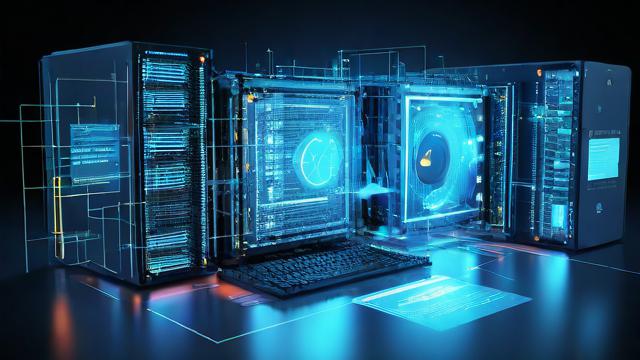如何用英语表达‘服务器维护’?
Server Maintenance: Ensuring Optimal Performance and Security

Server maintenance is a critical aspect of managing IT infrastructure, ensuring that your systems remain reliable, secure, and performant. Regular maintenance can prevent unexpected downtime, enhance security, and improve overall efficiency. This guide will cover the essential aspects of server maintenance, including routine tasks, best practices, and common issues.
Importance of Server Maintenance
1、Reliability: Regular maintenance helps to identify and resolve potential issues before they cause significant problems.
2、Security: Keeping software and systems up-to-date protects against vulnerabilities and cyber threats.
3、Performance: Routine checks and optimizations ensure that servers operate at peak performance.
4、Longevity: Proper maintenance extends the lifespan of hardware components.
5、Compliance: Adherence to maintenance schedules ensures compliance with industry regulations and standards.

Routine Server Maintenance Tasks
| Task | Frequency | Description |
| Software Updates | Weekly/Monthly | Apply patches and updates for operating systems and applications. |
| Backup Verification | Daily/Weekly | Ensure backups are working correctly and data is recoverable. |
| Hardware Inspection | Monthly | Check physical condition of hardware components. |
| Security Audits | Quarterly | Review security logs and configurations. |
| Performance Monitoring | Continuous | Monitor system performance metrics and address anomalies. |
| Disk Space Management | Weekly | Clean up unnecessary files and free up disk space. |
| User Account Management | Monthly | Review and update user accounts and permissions. |
| Log File Analysis | Daily/Weekly | Analyze log files for errors or unusual activity. |
| Network Configuration Checks | Monthly | Verify network settings and connectivity. |
Best Practices for Server Maintenance
1、Automate Where Possible: Use scripts and automation tools to handle repetitive tasks.
2、Documentation: Maintain detailed records of all maintenance activities and changes.
3、Scheduled Downtime: Plan maintenance during off-peak hours or scheduled downtime to minimize disruption.
4、Redundancy: Implement redundant systems and failover mechanisms to ensure high availability.
5、Training: Ensure that IT staff are trained on the latest maintenance techniques and tools.

6、Vendor Support: Leverage support contracts with hardware and software vendors for timely assistance.
7、Regular Reviews: Conduct regular reviews of your maintenance strategy to adapt to changing needs and technologies.
Common Issues and Troubleshooting
1、Server Overload: Identify the root cause (e.g., resource hogging processes) and optimize or distribute the load.
2、Data Corruption: Use backups and file integrity checks to restore corrupted data.
3、Hardware Failure: Replace faulty hardware components promptly and consider implementing redundancy measures.
4、Network Connectivity Issues: Diagnose and resolve network issues by checking configurations, cables, and devices.
5、Software Bugs: Apply patches and updates as soon as they become available to fix known bugs.
6、Security Breaches: Conduct immediate investigations and implement corrective actions such as patching vulnerabilities and enhancing security protocols.
7、Performance Degradation: Optimize system configurations, defragment disks, and manage resources efficiently.
8、Power Outages: Ensure uninterruptible power supplies (UPS) and proper power management strategies are in place.
9、Cooling Problems: Monitor temperature levels and maintain adequate cooling to prevent overheating.
10、Configuration Errors: Regularly review and validate configuration settings to ensure accuracy.
Related Questions and Answers
Q1: How often should server patches and updates be applied?
A1: Patches and updates should be applied as soon as possible after they are released, especially if they address critical vulnerabilities. For less urgent updates, a monthly or quarterly schedule can be adopted depending on the organization's policies and risk assessment.
Q2: What are some signs that indicate a server may need immediate maintenance?
A2: Signs that a server may need immediate maintenance include frequent crashes, slow performance, unusual noises from hardware, error messages, high CPU usage, disk space running low, and security alerts. Addressing these signs promptly can prevent more severe issues from developing.
到此,以上就是小编对于“服务器维护 英语”的问题就介绍到这了,希望介绍的几点解答对大家有用,有任何问题和不懂的,欢迎各位朋友在评论区讨论,给我留言。





暂无评论,5人围观